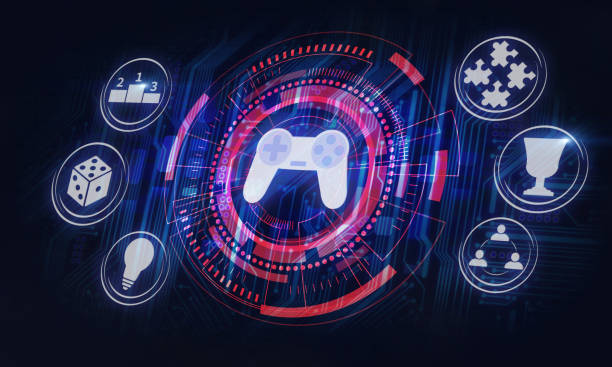
- May 7 2025
- SFI Solution Team
Gamifying Integration Rollouts to Improve Internal Adoption
In the current rapidly evolving digital environment, the integration of enterprise software remains a constant necessity. Whether it involves the adoption of a new Customer Relationship Management system, the implementation of a data warehouse, or the deployment of a collaboration tool, organizations frequently encounter a significant obstacle: internal adoption. Without active engagement from employees, even the most sophisticated software integrations may fail to achieve their potential, leading to diminished return on investment and increased friction among teams. A well-established approach to address this issue is gamification, which involves incorporating game-like elements into non-gaming scenarios. This article will examine how the gamification of integration rollouts can greatly enhance internal adoption, mitigate resistance to change, and facilitate a smoother and more successful transition.
Why Internal Adoption Often Fails
Integration rollouts typically fail due to :
-
Poor Communication : Employees don’t understand the value or purpose of the new system.
-
Lack of Incentives : There’s no clear benefit to changing old habits.
-
Training Gaps : Users feel unprepared or unsupported.
-
Cultural Resistance : Teams prefer the comfort of familiar processes.
To overcome these barriers, companies need an approach that speaks to motivation, recognition, and engagement—and that’s where gamification comes in.
What is Gamification in the Context of Integration Rollouts?
Gamification refers to the use of game mechanics, such as points, leaderboards, rewards, and challenges, in non-gaming environments. When applied to integration rollouts, it encourages user engagement and learning through :
-
Friendly competition
-
Instant feedback
-
Milestone tracking
-
Recognition and rewards
The idea is to turn a potentially tedious or frustrating process into one that’s interactive, enjoyable, and goal-driven.
Benefits of Gamifying Integration Rollouts
Enhanced Engagement
Gamification taps into intrinsic motivators—like achievement and recognition—to foster engagement. When users are rewarded for exploring and using new tools, they’re more likely to invest time in learning.
Faster Onboarding and Learning
Gamified learning modules—such as quizzes, tutorials, or interactive walkthroughs—help reinforce training materials. Employees retain more information, making them productive faster.
Healthy Competition
Leaderboards and team challenges can spark friendly competition, encouraging departments to reach adoption milestones ahead of others.
Real-Time Feedback
Instead of waiting for quarterly adoption metrics, gamification provides immediate insights into user activity, showing who’s engaging and who may need additional support.
Improved Morale
Gamification makes change management less intimidating. When users feel acknowledged for their efforts, morale rises—and so does adoption.
Real-World Example : Salesforce CRM Rollout
A global sales organization implemented Salesforce but initially faced low usage rates. By introducing a gamified adoption program that awarded points for logging calls, updating opportunities, and completing training, usage increased by 70% within three months. Sales reps were ranked weekly, and top performers received digital badges and gift cards. This small investment in gamification yielded a dramatic improvement in CRM engagement and ROI.
Steps to Gamify Your Integration Rollout
Define Clear Goals
Start with measurable objectives like :
-
Percentage of employees trained within 30 days
-
Daily or weekly usage rates
-
Successful task completions within the new system
Segment Your Users
Different teams and roles have different motivations. Tailor gamified experiences accordingly—for example, a marketing team may respond better to creative challenges, while IT might prefer analytical milestones.
Design Game Mechanics
Common elements include :
-
Points for task completion
-
Badges for achievements
-
Leaderboards to show top performers
-
Challenges to drive engagement (e.g., “Use the new tool for 5 days straight”)
Incorporate Rewards
Offer meaningful rewards, both tangible (gift cards, extra time off) and intangible (recognition, digital trophies). Ensure the rewards align with your culture and values.
Provide Real-Time Progress Updates
Dashboards and notifications help users track their own progress, reinforcing habits and encouraging continued use.
Collect Feedback and Iterate
Monitor what’s working and adjust the gamification elements as needed. Employees should feel that the game evolves and stays relevant.
Best Practices for Success
-
Make It Inclusive : Ensure the system accommodates different user types and accessibility needs.
-
Avoid Over-Gamification : Too many game elements can feel gimmicky. Focus on meaningful engagement.
-
Align with Business Outcomes : Tie rewards to actions that deliver real value to the organization.
-
Celebrate Milestones Publicly : Use internal channels like Slack, email, or town halls to celebrate team progress.
Tools and Platforms to Support Gamified Rollouts
Several tools can help you gamify adoption effectively :
-
Bunchball Nitro – Enterprise gamification platform for behavior change
-
Centrical – Personalized learning with gamified goals and feedback
-
Spinify – Gamification for sales, support, and service teams
-
Salesforce Trailhead – Offers built-in gamified learning paths
Choose a platform that integrates seamlessly with your internal tools to avoid fragmentation.
Conclusion
Gamifying integration rollouts isn’t just a buzzword—it’s a proven strategy to boost engagement, reduce friction, and ensure your software investments pay off. When employees are part of a rewarding, interactive experience, they’re more likely to embrace change with confidence.
By treating integration not as a mandatory transition but as a collective journey with goals, challenges, and rewards, companies can transform how internal teams adopt, adapt, and thrive with new technology.
Ready to Drive Adoption Through Gamification?
If your organization is preparing for a major system integration, now’s the time to think beyond traditional training. A gamified rollout could be the catalyst that turns a hesitant team into a high-performing, tech-savvy powerhouse.
Contact us today +1 917 900 1461 or +44 330 043 1353 to learn how we can help you design and implement a gamified rollout tailored to your unique goals.
Previous Post